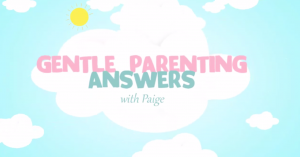On the morning of Jan. 21, 2017, I woke up with a mission. Just one day before, Donald Trump had been inaugurated as the next president of the United States, and I needed to channel all of the pain and anguish from the election into something productive.
I put on some clothes and took to the streets of New York City with my friends. We expected signs and chants (“My body, my choice” and “Respect existence or expect resistance” were some of my favorites), but what we didn’t expect were the hordes of people outside — thousands of people as far as my eyes could see. We could barely move with the crowd; the crowd moved us.
More than four million people participated in the Women’s March and in satellite marches across the world that day. It is now known as the largest mass mobilization in U.S. history. But what many don’t know is that the Women’s March started as a single Facebook post. Overnight, a few dozen friends who had agreed to attend turned into 10,000 marchers. We know the rest.
While the Women’s March is an extraordinary example of an online campaign that spawned an entire global movement, it’s part of a broader phenomenon. Other major social movements that either began as hashtags or online communities include Black Lives Matter, #OscarsSoWhite, and #CripTheVote.
Social media has created unique opportunities for progressive activists to make important issues more visible and urgent. It has also made it easier for people to show support for a cause, particularly those who wouldn’t have had access otherwise.
But if an online campaign is aiming to create real, lasting change beyond a trending hashtag, experts agree that it’s got to be about more than simply building awareness. Here’s how you know if a movement is successfully growing and becoming sustainable, according to these seasoned social justice activists:
You’re Recruiting And Building Leaders, Not Just Supporters
When it comes to building a movement, there’s something to be said about strength in numbers.
It took four national co-chairs, 70 national organizers, 400 state coordinators and 98 global coordinators to pull off the first Women’s March in 2017, according to Carmen Perez, a national co-chair of the Women’s March based in New York City.
But even as the organizers were gearing up for the march, they received some criticism for leaving out certain communities. For example, disability rights were noticeably absent from its platform, and pinky pussy hats — which became a symbol of the march — were lambasted for erasing trans and nonbinary people.
The organizers recognized that the Women’s March needed to act as more of a framework that had a long-term vision but still created room for new activists who wanted to help lead and shape its future.
“The way in which we sustain a movement outside of a hashtag or a march is not only to create entry points and a mission that people can resonate with. It’s [also about] unity principles to allow people to see themselves in the march, whether they just showed up for the first time or if they were seasoned organizers,” says Perez, who identifies as a Chicana feminist and also serves as the executive director for The Gathering for Justice, a movement dedicated to ending racial inequity and mass incarceration.
Since then, the organization has recruited more than 15 women who serve as experts on different issues that intersect through a gender lens, whether it’s reproductive justice, criminal justice reform or trans rights.
“As long as we support one another and as long as we understand it’s going to constantly evolve and that we are patient and kind to one another, I think what we could build together is gonna be so powerful that no one could dismantle it,” Perez says.
You’re Talking About It Over And Over Again
The reality is that social justice movements evolve and change over time, and that’s OK. For changemakers who want to build long-lasting impact, the key is to remain relevant and relatable no matter what happens in the news cycle.
It’s been well over a year since disability activist Keah Brown first created the hashtag #DisabledAndCute — and it’s still popular on Twitter. The hashtag has crossed state lines, countries, languages, and other identities. It’s resonated with seemingly hundreds of people who feel the way Brown does: “I’m cute, but I’m also disabled. One doesn’t cancel the other out.”
“People don’t think about attractiveness or desirability when it comes to disability,” says Brown, a Black disabled writer based in Lockport, N.Y. “I think it’s important for us in the community to know that we can be both, and we don’t have spend our lives thinking we’re undesirable or ugly or gross, or make people angry just by existing.”
Brown says she keeps the #DisabledAndCute movement alive by talking about it — a lot. She brings it up at panels she’s invited to speak on, during interviews with the media, and in her everyday conversations. She also discusses it in her upcoming essay collection, “The Pretty One,” to be published by Atria Books in spring 2019. Often, the hashtag provides context for her work as a disability activist and establishes her as an authority to speak about disability issues.
Simply keeping #DisabledAndCute visible in her daily life, Brown says, helps remind people, especially disabled people of color, that it’s there as a safe space and community for them to share their own stories.
“I want this to be about less as a hashtag but as an idea, a jumping off point for disabled people who are learning to love themselves,” she says.
You’re Building Momentum Both Online and Offline
One of the biggest challenges for social movement leaders is answering the question How do we galvanize online supporters so they bring this work into the streets?
Launching a hashtag that connects people who feel like they have a say in what the hashtag means is an important starting point, says Eli Cuna, the national field director of United We Dream, the country’s largest youth-led immigrant network. But what Cuna believes to be “the secret sauce” to a successful movement are activists who see a hashtag not just as a trend, but as something they collectively own and are working to co-create. .
For example, the hashtag #HereToStay has brought together people who are dedicated to fighting and showing up for immigrants at risk of deportation. But the phrase “here to stay” itself has been a “resilience phrase” for so long within immigrant communities that it’s embedded in who they are.
“It’s part of our vocabulary,” Cuna says.
When a movement has a strong supporter base, it’s those folks who will put that support into practice, share the movement with the rest of the world and start building momentum offline — whether that means knocking on doors, calling politicians, signing petitions or hosting community events.
“That momentum is gonna translate into power, and that power is going to shift who is in power — the stakeholders,” Cuna says. “[Connecting with people] also brings responsibility about how you’re going to engage them, how you’re gonna create democracy and a way for them to connect beyond the trending moment.”
[do_widget id=’text-101′]
Wendy is a national reporter based in New York City, with a focus on health, politics, and social issues. She is a disabled Chinese American woman and a graduate of Columbia Journalism School. Her work has appeared in The New York Times, Teen Vogue, Bustle, Columbia Journalism Review and more. Follow her on Twitter at @wendyluwrites or visit her website at wendyluwrites.com.
Search our 3000+ articles!
Read our articles about:
Our online racial justice training
Used by hundreds of universities, non-profits, and businesses.
Click to learn more
Most Read Articles
- « Previous
- 1
- …
- 30
- 31
- 32




















